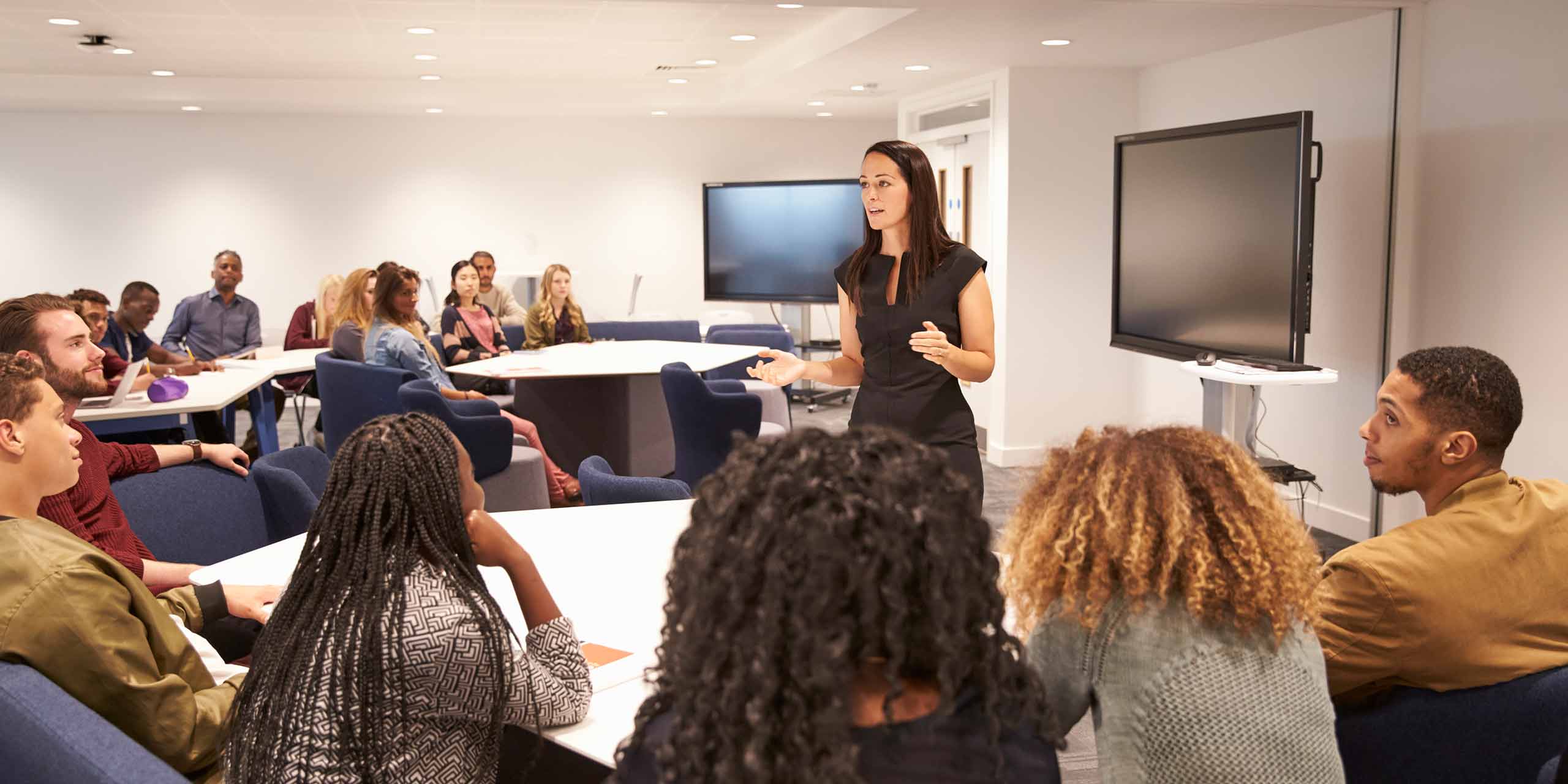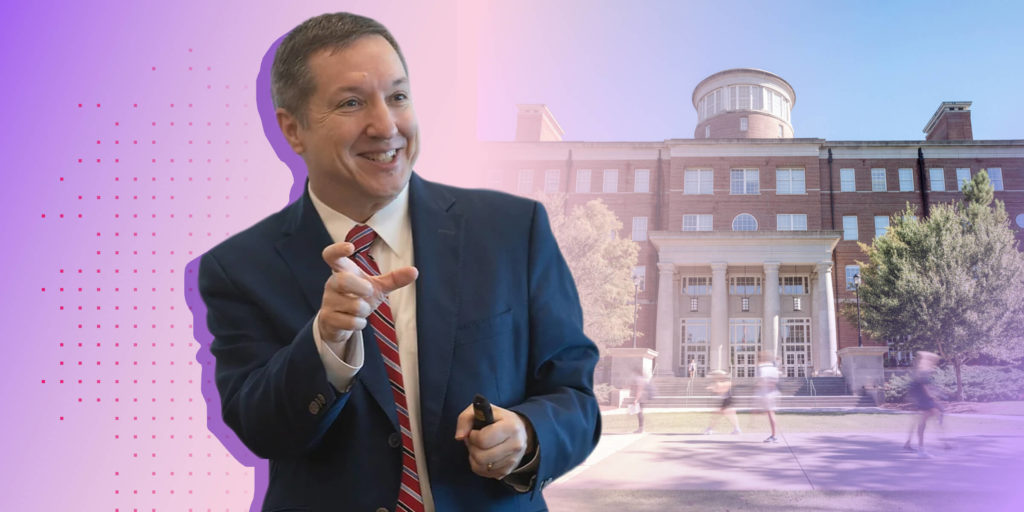How do you know if your teaching practice is effective—and whether you’re just teaching a certain way because that’s how your professors did it? In the spirit of reinvention—and remembering the ‘growth mindset,’ where making mistakes is an important part of getting better, here are four professors and how they decided to tweak their initial teaching styles: all in the name of helping their students achieve their full potential.
Learning to step back
John Redden, Associate Professor in Residence, University of Connecticut
Professor John Redden teaches Physiology and Neurobiology to up to eight hundred students—and that’s in one course alone. Including a second course he teaches, he is exposed to thousands of faces each week. His recipe for success: adopting interactive teaching methods.
“Giving [students] these opportunities to share what they know or to realize they don’t know anything is really valuable. And it’s valuable to the instructors, too, because I need to know if my students don’t understand something,” he explains. Although his students are comfortable with the traditional mode of lecturing, i.e. a professor on center stage discussing anatomy for an hour, this method is far from engaging. But if students are given the opportunity to discuss the content, they will help Redden promote student engagement—and indicate who needs help.
The biggest change for Redden since he started, has been, as he says, “the way he conceives of his own role as the expert in the room.” Redden learned to step back to allow his students to engage in active, hands-on learning. He aims to be a guide, not a facilitator: “Ultimately our job is to try to be equitable, to do as much as we can for as many students as possible.”
The bulk of student learning should be from interactive encounters such as peer discussion, as opposed to his lecturing. Students who attend his interactive classes get higher grades, he says—and higher grades mean they attend class more. Furthermore, a more personalized learning experience through collaboration and interaction with professors has helped diversify STEM majors, Redden says, noting how people of color and those without a science background are more inclined to join a program that depends on active learning techniques.
Let students learn from one another
Burcu Karabina, Mathematics Instructor, Florida Atlantic University
Professor Burcu Karabina coordinates the Math for Liberal Arts course, which means she is tasked with teaching daunting material to arts majors. Karabina recalls an instance where she asked 100 liberal arts students if there were any questions during her lecture, only to receive pin-drop silence.
Before, her liberal arts students were reluctant to speak out if they did not understand something. Karabina recalls her early days teaching math: “I felt like there was a big wall between me and my students. And I thought: I need to punch a hole in this wall. I need to get there and help them.” It was at this moment that she decided to teach math by transforming herself into a language professor.
Karabina takes active steps in guiding her students through course discussions and then takes a step back. What she deems as “math anxiety” is slowly lessened through constructive, peer-to-peer encounters. When speaking to her students, she says, “‘Now it’s your turn.’ Because the best way to overcome math anxiety is to do math.” Through implementing language-learning sessions and group activities, she sets her students up for success.
After a semester of this, her students are more keen to learn than ever before. Giving her students mathematics-based language tools and encouraging peer mentoring pays off: “After three months of adventure, they can speak math. And then some of my students receive their first As in their math courses, and they’re so happy.” Karabina ultimately believes that professors cannot only lecture in front of the class for the entirety of the course, but must encourage collaboration along the way if they want to create successful students.
Changing the way you see student data
Troy Wood, Professor of Chemistry, SUNY Buffalo
Troy Wood teaches general chemistry and analytical chemistry to freshmen and sophomores. Wood has incorporated classroom response systems into his curriculum for decades but the way he interprets his data today has drastically changed. Previously, he says, “I’d get the means, the standard deviations, the distribution of the grades, and somehow I was satisfied with that.” But the one thing he needed to improve students’ experience in the classroom was to look at students individually.
Wood now uses classroom response tools to gauge which students understand his material. He sees what they infer incorrectly, and addresses it in class. The benefits of accounting for individual responses in the classroom are two-fold: Wood saves time lecturing on clearly understood content while his students are provided with clarity on fuzzy topics. “It turns out that by using the classroom response systems, I’ve become much more efficient in my lectures,” he says.
By ensuring he doesn’t generalize his students’ data, Wood can instantly correct misconceptions in lecture. Classroom response systems, as Wood finds, are also an effective tool for helping students excel in their final exams—but only when professors immediately address responses. In a previous exam, says Wood, “I had no failures on exam one in analytical chemistry. And this has been the semester I’ve been the most aggressive about asking classroom response questions.” In Wood’s eyes, creating a personalized experience is essential for equipping students with the tools needed to succeed in their academics.
Students don’t all enter a course at the same level
Candice Damiani, Biology Lecturer, University of Pittsburgh
Damiani teaches Foundations of Biology 1 and 2 in the Department of Biological Sciences at the University of Pittsburgh. Damiani used to believe that once her students complete a course, they would have the knowledge required for success in future Biology courses. But this was far from the truth.
“We had to find a way to change the series so that the learning takes hold early and stays with them through the series,” she says. The “one size fits all” principle was not working. Not all students are at the same level.
Damiani’s course needed to be renovated inside and out to achieve this. After revising her courses, she now ensures her students develop skills linked to their program of study. “We don’t focus on content anymore. We create skills,” she says. After returning to why she is teaching content, and focusing on skills, Damiani can help her students succeed in her courses regardless of skill level.
Video: 5 professors on the future of higher education
Watch more in this video featuring some of the above professors, covering how to balance teaching responsibilities against research roles, dealing with declining graduation rates, and committing to planning and delivery. And for the next generation of teachers, some valuable tips: including experimentation and risk-taking, and getting to know your students.
For more on how professors can implement real-time improvements to their courses, read our e-book, The Professor’s Guide to Agile Teaching.


